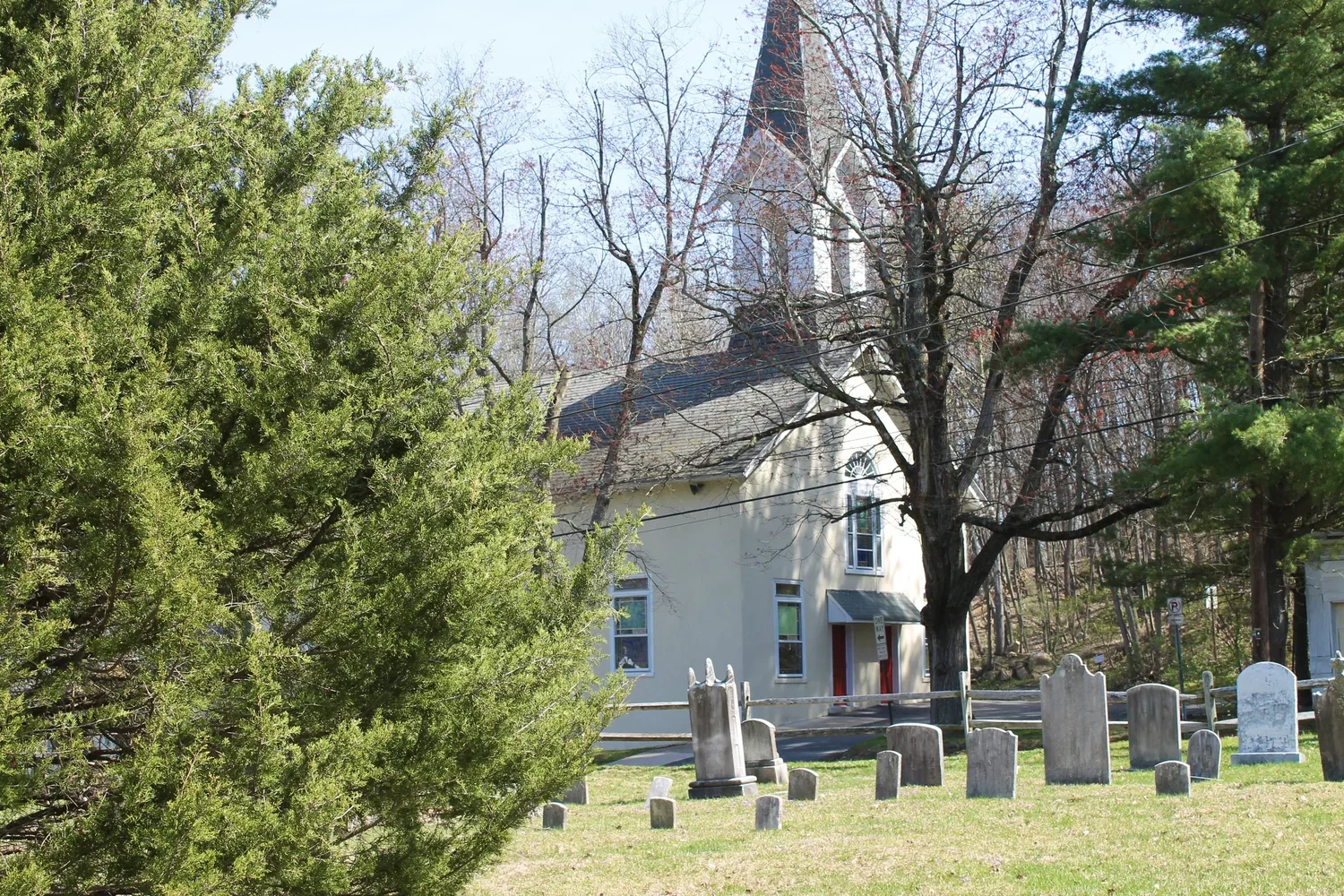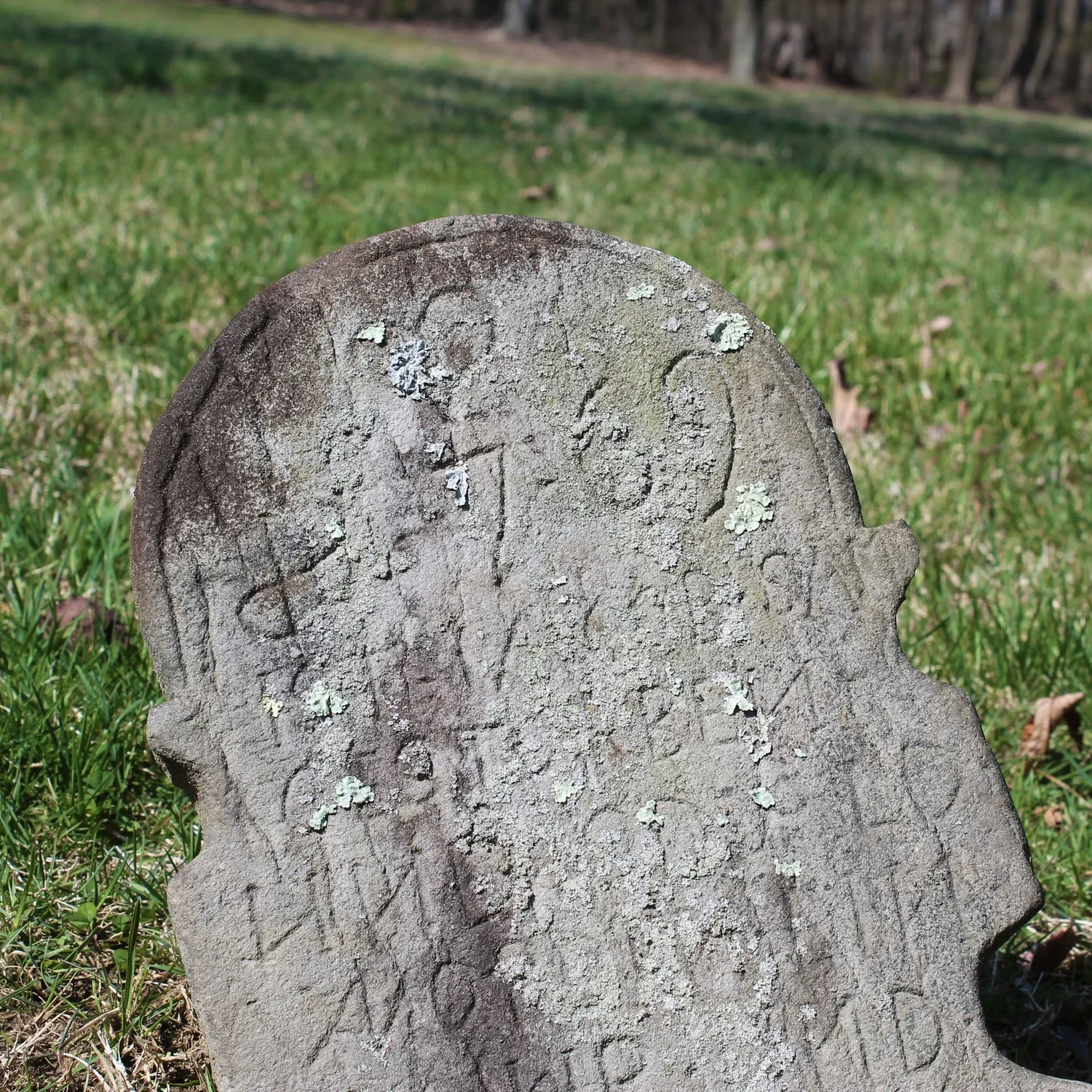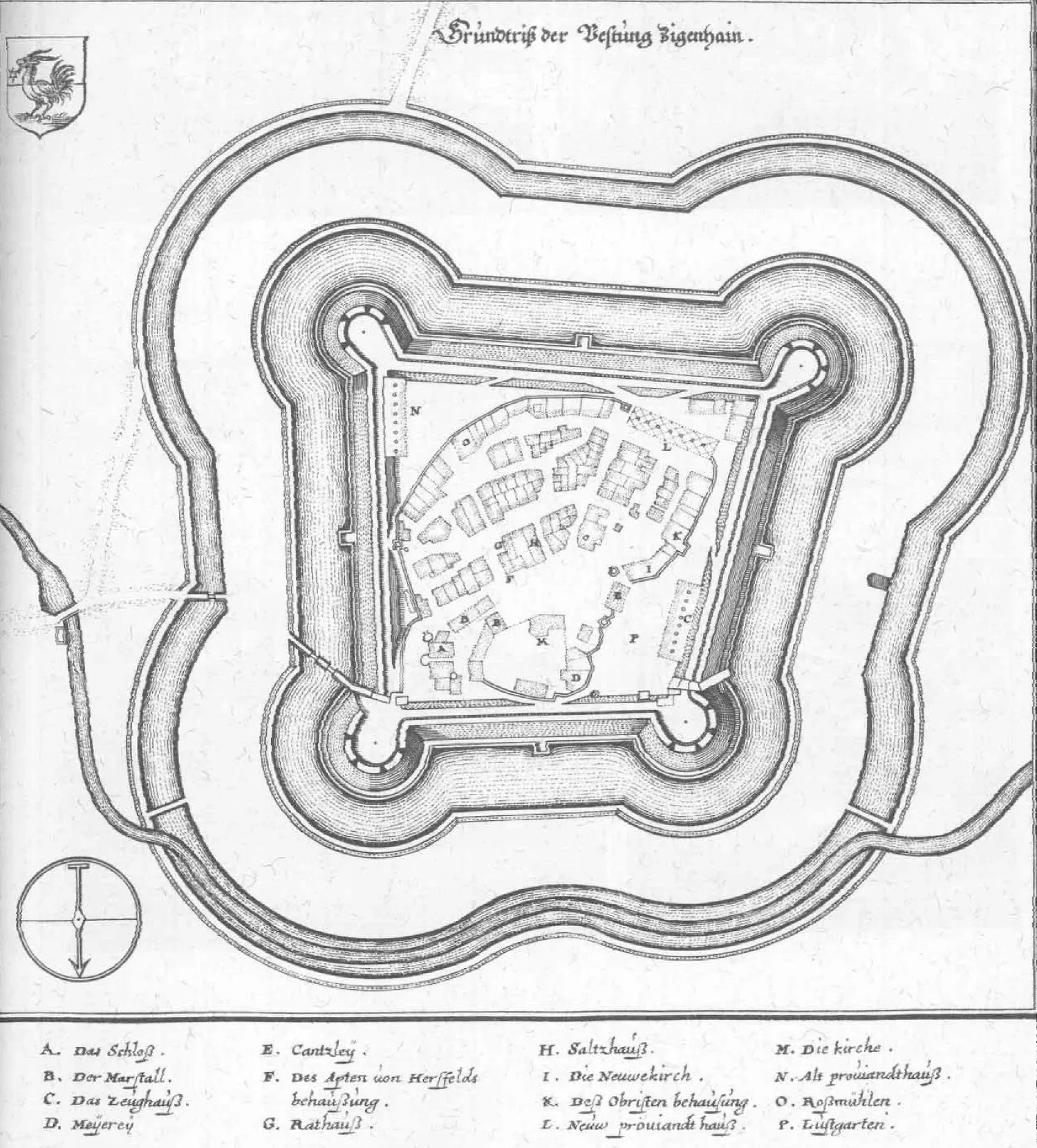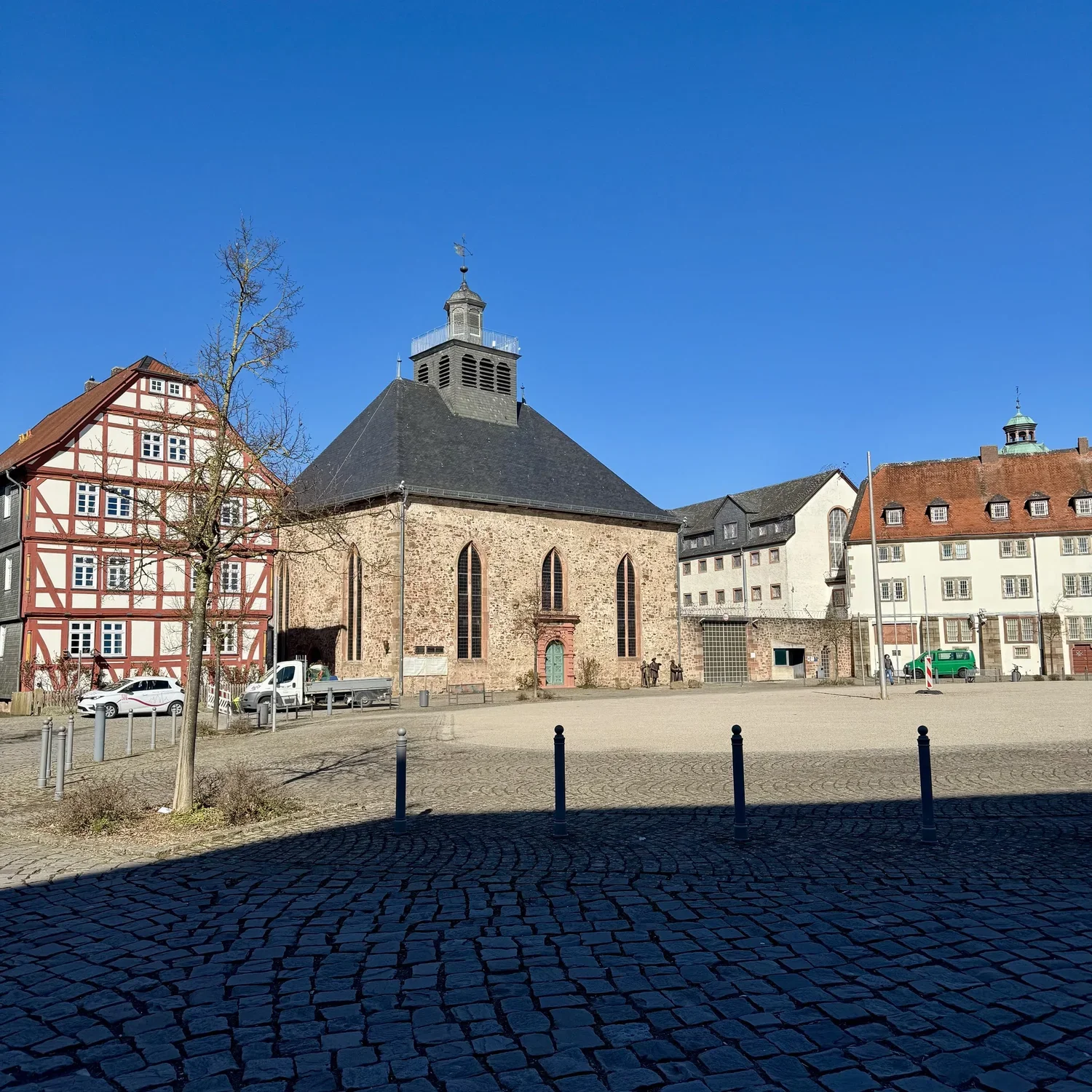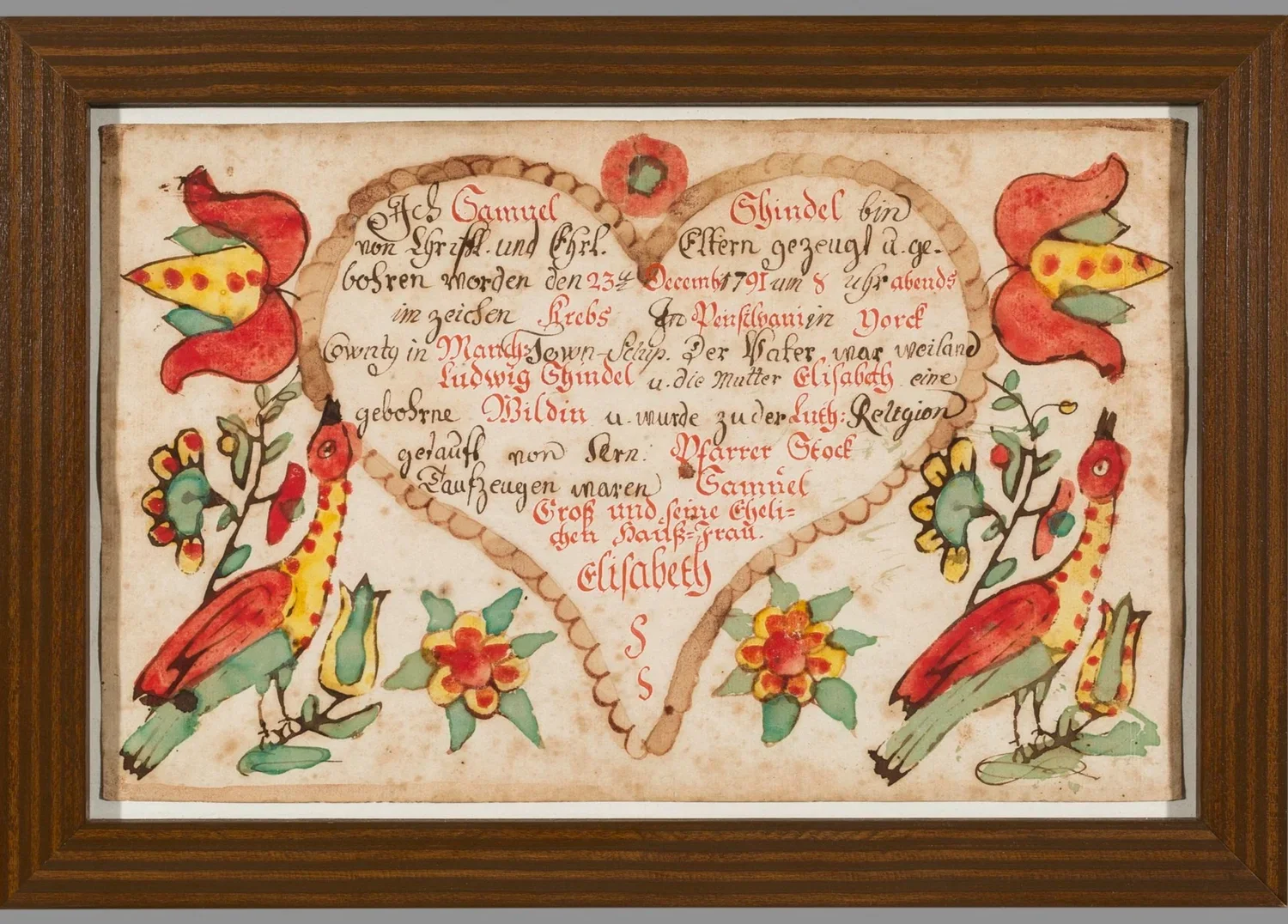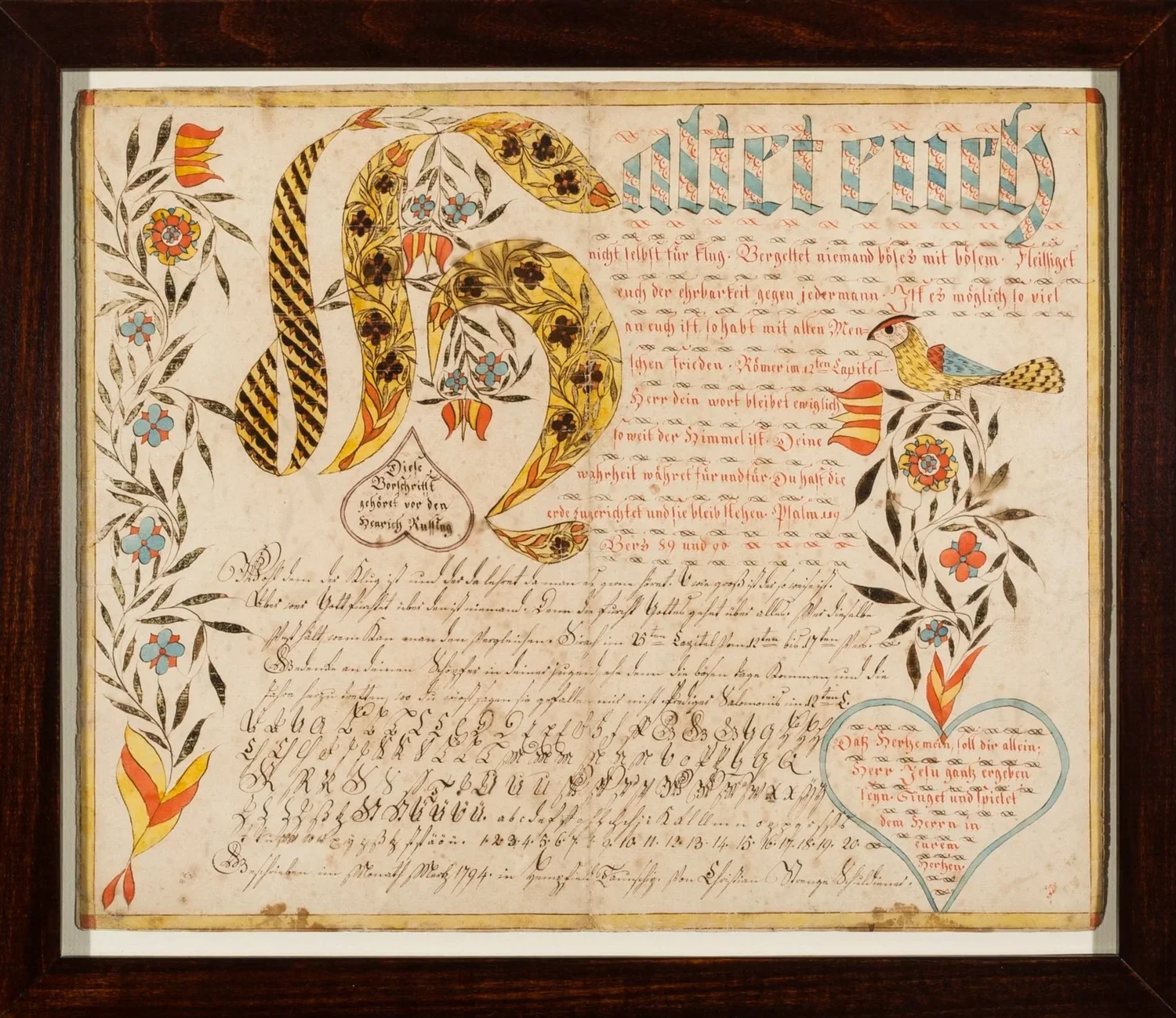Tambour Yockel, part 2
Jerusalem Eastern Salisbury’s church records, kept in immaculate German script, suddenly end in 1791.
Florentina, 17 October 2025
[a continuation of last week’s post]
Jerusalem Eastern Salisbury’s church records, kept in immaculate German script, suddenly end in 1791. For more than half a century, the congregation vanished, only to appear once more in 1847, when the cornerstone of their new church was laid on Ascension Day. Where had these people gone in the meanwhile? Why did they let their church building go to ruin and not touch it for 56 years? And why on earth did they choose to rebuild the church away from the original one, on the opposite side of the street distant from the cemetery?
Jerusalem Eastern Salisbury Church today
Shortly after the church was rebuilt, two published accounts of the Tambour Yockel story appeared, though oral tradition of the legend was firmly in place by then. It has also been printed up as a broadside and retold as a ballad in English and German. John Birmelin, perhaps our best Pennsylvania Dutch poet, celebrated the story in his own magical way — lending even more mystery to the death of Drummer Jake on Lehigh Mountain that night. He wrote that the superstitious Pennsylvania Dutch would drive miles out of their way to avoid passing the cemetery at night. So fearful were they to happen upon Wild Bill, the Devil, the Tambour Yockel, and any others who may rest uneasy in the cemetery:
Die alde Leit verzeehle, ass efters in der Nacht
So eener vun de Dode nix Gudes datte schafft.
Es iss der Tambour Yockel, mit seinre Deiwelei;
Do mache Leit en Umweg, geht niemand gaern verbei.
The elders tell the story, that when the sun has set
One of the dead stirs restless, intent on making strife.
It is the Tambour Yockel, with his old evil ways;
Such that they all avoid it, the graveyard and the church.
Drummer Jake challenged the balance of life and death that night — he became a cautionary tale of what happens when one disturbs the dead and challenges the Devil. I wonder if people in that area still tell ghost stories about the haunted cemetery. Maybe, on moonlit nights, when the air is still and the cold, you can still hear the faint sound of a drummer drumming in the distance. You’ll have to let me know what you’ve heard about this story, or perhaps you know of other ghostly hauntings in the Pennsylvania Dutch country. I’d love to hear about them.
Tambour Yockel, part 1
In the years after the Revolutionary War, fear gripped tightly around the small Salzbarrick (Salisbury) area nestled on the slope of Lehigh Mountain.
Gereon, 10 October 2025
[as we approach Halloween, I’m reposting some spooky tales from an earlier version of this blog]
In the years after the Revolutionary War, fear gripped tightly around the small Salzbarrick (Salisbury) area nestled on the slope of Lehigh Mountain. A local farmer nicknamed Wild Bill had just been laid to rest in the cemetery there, but Bill was an awfully cantankerous man — not one to shy away from a fight, and indeed the instigator of many quarrels with his neighbors. Some were glad that Bill was finally in his grave.
A few days after his funeral, the local men gathered — as they usually did — in the tavern to gossip and drink and “talk big.” Naturally, the topic of conversation that day centered on Wild Bill, as they each recounted their own run-ins with the belligerent man. As the night wore on only a few diehards remained at the tavern, drunker than before and still cursing the name and miserable life of their recently departed neighbor. One of them was a former soldier, a drummer in the war, known as Tambour Yockel in Pennsylvania Dutch, “Drummer Jake.”. Yockel had listened silently to the stories about Wild Bill until suddenly he reddened and erupted with anger. He wasn’t afraid of a fight either and had once fought Bill, but was soundly beaten and still bore the scars from that fight. “To hell with Bill!” he exclaimed — “And that’s where he is. Surely, he’s communing with the Devil now!”
The night continued on, but Yockel was still fuming in the corner as he nursed another whisky and traced his old scars with a finger. “I’ll fight him one last time,” he slurred. “I’m going to wake him up from his peaceful slumber and give him the last beating he’ll ever get!” Yockel stormed out of the tavern — a small troupe of drunkards in tow.
The early hours after midnight were quiet, save the loud outbursts from Yockel as he clambered up the mountain toward the cemetery. “Come out, Bill! Show yourself and fight me!,” he yelled as he stumbled around the cemetery toward the freshly dug grave. “Come out and fight, you coward! Send your new friend the Devil, too, and I’ll beat him as well!” His friends held back — curious, but unwilling to trod the cemetery at night, especially now that their friend had summoned Old Scratch himself. Suddenly, they heard a scream. Then there was the sound of thumping, of clothing tearing, of bones breaking, more screams, then the sound of flesh being gouged. Then silence. The onlookers ran.
When finally the sun rose, the curious ventured back to the cemetery. There they found Yockel dead in a pool of blood. His limbs torn from his body, his clothing ripped apart and smelling of brimstone. Surrounding the body were deep impressions of cloven hoofprints in the damp soil.
Gravestone in the Jerusalem Eastern Salisbury Church cemetery
That all is to have happened at the Morgenland Kirche (today known as the Jerusalem Eastern Salisbury Church), which was founded in 1759. It was always a smaller congregation and was at first just a simple log church. But the congregation is a mystery — and that is what gives life to the circumstances surrounding the death of Drummer Jake.
On the parade ground with fraktur artists
This past March, I returned to Marburg, Germany where I did most of my undergraduate college studies.
Maria Himmelfahrt, 15 August 2025
This past March, I returned to Marburg, Germany where I did most of my undergraduate college studies. While there, I wanted to head north a bit in the state of Hesse to learn more about the whitework embroidery practiced in the Schwalm. So, I visited the Museum of the Schwalm, located in the middle of the moated fortress at Ziegenhain that was built in the 16th century.
Moated fortress Ziegenhain, Topographia Hassiae (1655)
Right in front of the museum is a military parade ground that was built in 1769.
Paradeplatz (parade ground), Ziegenhain, Hesse
When Frederick II the landgrave of Hesse-Kassel made a deal with the British to supply them with soldiers, he gathered the recruits on this parade ground in Ziegenhain. Those Hessian soldiers sent to America by the British were actually the cause of one of the grievances against the crown written in the Declaration of Independence:
[George III] is at this time transporting large Armies of foreign Mercenaries to complete the works of death, desolation, and tyranny…
As I stood there, I reflected on two of our most well-known Pennsylvania Dutch fraktur artists. Friedrich Krebs (c. 1749–1815) was the most prolific fraktur artist. He likely lived in Zierenberg, about 40 miles north of Ziegenhain. Krebs came to America as one of these Hessian soldiers, but stayed and taught in Swatara Township and lived near Hummelstown in Dauphin County.
Geburts- und Taufschein by Friedrich Krebs, 1957.1212A, Winterthur Museum
My thoughts then turned to another well-known fraktur artist Christian Strenge (1757–1825). Strenge was born in Altenhasungen, about 60 miles north of Ziegenhain. He also came to America as a Hessian soldier, stayed in America, and lived in both Hempfield and East Petersburg in Lancaster County.
Vorschrift by Christian Strenge, 1981.0002, Winterthur Museum
Standing there on the former parade grounds, I wondered if Friedrich and Christian were at the same spot years ago being recruited before heading to America. They arrived to fight Americans, but stayed to make these beautiful works on paper and to teach our ancestors. Indeed, they became “one of us” Pennsylvania Dutch.

